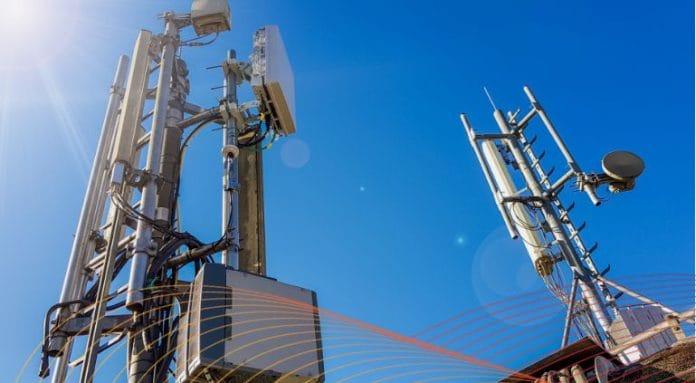Generally weak ARPU trends… Except for Celcom’s prepaid segment, YoY ARPU was weaker across the board for all
segments in 3QCY23, particularly for Digi. For the latter, blended ARPU declined by 8% YoY, which was attributed to weakness at the postpaid segment. This emanates from: dip in interconnect rates (effective: Mar 2023), and slower traction for on- demand offerings. Hence, this had further exacerbated the decline in CDB’s postpaid ARPU, which was as high as RM71 in 1QFY22 before the start of its sequential rout.
Meanwhile, in the case of MAXIS Kenanga believes that weaker postpaid ARPU (-7% YoY) was due to drag from new users on its affordable entry level Hotlink Postpaid plans. This was in-line with its strategy to upsell products and upgrades its low margin prepaid subscriber base. On the bright side, sequential prepaid ARPUs for MAXIS remained resilient in spite of the introduction of affordable MADANI prepaid packages in 3QCY23. This was attributed to effective ARPU management via personalised promotions on Hotlink MU app.
…but strong YoY subscriber net adds. On a rosier note, there was a 3% YoY subscriber base expansion for the top three
mobile players in 3QCY23.
5G monetisation remains sluggish. In terms of 5G adoption, take-up remains sluggish given that it is still early days, and
availability appears lacking. According to OpenSignal, 5G availability in Malaysia was just 21% during the May-July period. As
such, the current 5G infrastructure seems inadequate to accommodate more users and traffic. Hence, this further supports the case for deployment of a second new network to boost 5G service quality. Evidently, the small 5G subscriber base of 1.4m in Malaysia dwarfs in comparison with 43m 4G subscribers. Moreover, out of the 74% CDB subscribers that have provisioned (activated) their 5G devices, merely 11% are active users. However, we acknowledge that 5G monetization may materialize in future to provide a boost to ARPUs and earnings. In the meanwhile, we wait for awareness, capacity and usage to ramp up.
Lack of awareness on 5G’s advantage and benefits. Kenanga believes that Malaysian users are generally not cognizant of 5G’s potential and benefits. In particular, there are abundant and diverse applications of 5G technology for industries and enterprises. These include: precise automation, long distance remote surveillance, real time high-definition broadcasting, analysis of vast amounts of data on cloud AI, and so forth. Such applications result in the transformation of business processes that enable organizations to scale up, enhance efficiency and achieve breakthrough innovations.
Hesitation in embracing new 5G technology. Unfortunately, for enterprises that recognize 5G’s advantages, some are averse to transformation. This is underpinned by their inclination for systems and processes to remain status quo. This is
understandable given the requirement to uproot current systems and fork out hefty technology investments in order to harness 5G. Moreover, they also need to be prepared to trim their workforce to enable AI automation to take over via robots and advanced machinery. A recent use case for 5G in the corporate context is implementation of an AI autonomous inventory system at DHL’s Integrated Logistics Centre in Shah Alam. This is a system that combines robots and drones equipped with high-resolution cameras. According to DHL, efficiency is boosted by 20-fold and precision is enhanced following installation of this system
Telcos are also trying to figure out 5G marketing strategies. On top of that, a major 5G technology provider revealed that some telco carriers are reluctant to realign their marketing strategies. This is because telco carriers now need to aim for
corporations instead of the traditional consumer when selling 5G services. Therefore, they need to educate their sales staff to shift their focus and target large multinational corporations instead. On the bright side, in 3QCY23, Kenanga observed positive traction in these efforts from telco players. For instance, CDB achieved enterprise revenue growth of 1.5% YTD emanating from the SME segment, ICT and connectivity solutions.
Individuals are no longer the target market when it comes to 5G. Whereas for consumers, applications that require 5G at this juncture include: (i) virtual reality experiences or interactions within the metaverse, (ii) ultra high-speed streaming services for gaming in real time, and (iii), autonomous driving for passenger vehicles etc. Moreover, the house believe that consumer applications continue to progressively expand as hardware, software and content developers harness 5G’s capabilities. However, at this juncture, these applications are still at the nascent or prototype developmental stage. On top of that, the pricing of high-tech 5G consumer devices are inhibitive for an average consumer to afford. Therefore, the typical individual does not feel compelled to upgrade to 5G unless consumer applications are refined and become widely accessible.
Details on 5G dual network may be finalised soon. In terms of material developments for the sector in 1QCY24, we believe that the the Ministry of Communications and Digital (KKD) will finally issue the highly anticipated official 5G dual network (DN) policy directive. To recap, in May 2023, the Government announced the implementation of the 5G network in 2 phases. Under Phase 1, Digital Nasional Berhad (DNB) will continue its rollout of 5G to meet 80% Coverage of Populated Area (CoPA) by end 2023 (end-Oct: 73%). Meanwhile, under Phase 2, the Single Wholesale Network (SWN) will transition to a DN.
Hopeful of crystal clear disclosures. As part of this transition, two entities will be established, namely entities A and B which will each own DNB and the upcoming second 5G network (NW2), respectively. Both entities will be entirely owned by private telcos – but their equity stakes are unknown at this juncture. Therefore, in 1QFY24, we are hopeful to receive enhanced clarity on details such as: (i) the final equity stake for each telco in entity A or B, (ii) key financial information on DNB (e.g. profitability, debt holdings, annual cash flow generation), (iii) entity B’s acquisition price (if any) and mode of payment (e.g. cash, securities), and (iv) revised (if any) access rates charged by DNB to each telco.
First step in transition was initiated recently. Recall that in 1 Dec, five telco players, each entered into conditional share subscription agreements (SSA) with the Ministry of Finance (MoF) and DNB. This entails: (i) acquisition of a 14% stake in DNB for RM100k, and (ii) cash payment of RM233m to DNB as prepayment for delivery of 5G access services. Post completion of this SSA, all five players will collectively own 70% stake in DNB. Meanwhile, MoF will retain a reduced stake of 30% (from 100%) and hold a special share that has certain rights that includes national interest. The SSAs are targeted for completion in February-April 2024. Hence, this clears the first step in enabling the transition to 5G DN from SWN.
DNB gets pumped with upfront cash. The prepayment amount of RM233m is regarded as shareholder advances to DNB
subject to fulfillment of conditions precedent. This includes satisfactory results on the ongoing due diligence findings on DNB.
However, it may revert to being deemed as a prepayment subject to circumstances set out in the upcoming shareholders’
agreement to be executed between the telcos, MoF and DNB. In this case, the prepayment amount offsets against future access payments to DNB. Therefore, this implies that in future, the cash outlay for shareholder advances are earnings neutral for entit B shareholders.
DNB will soon be fully private. Following completion of the SSAs, and upon DNB having achieved 80% CoPA, the telcos are required to acquire MoF’s remaining 30% stake in DNB for at least RM190m. Based on our understanding, post completion of this exercise, each telco will end up with a 20% stake in DNB after having forked out a total consideration of RM420m. The latter is the cumulative total of: (i) RM233m in shareholder advances for an initial 14% stake, and (ii) RM190m for an additional 6% stake to enable the full exit of MoF from DNB.
It’s anyone’s guess on the outcome. Whilst details remain fluid, Kenanga arrives at several assumptions on the potential mechanics of the DN implementation. Recall that it is KKD’s aspiration for healthy wholesale competition to drive enhanced 5G coverage and service quality. Therefore, it postulate that entities A and B will each be spearheaded by a single major telco leading a consortium of other smaller players. Therefore, in future, following entity B’s formation, it does not rule out the possibility that DNB’s shareholding structure may be recalibrated. Moreover, this will result in comparable total subscriber base between both entities. Hence, one does not have an unfair advantage over the other. Additionally, the house believes that operating conditions need to be level – which implies equal ownership of 5G spectrum blocks between A & B. On the same note of achieving fairness, we believe that KKD may structure a financially reasonable exit mechanism from DNB for entity B members.
What will happen to DNB’s access agreement? Recall that KKD had earlier revealed that entity B has two years to
progressively reach 80% CoPA. If this term prevails, the house believes that Entity B will continue to purchase wholesale capacity from Entity A during its first few years of operations. As such, it is able to offer 5G services to its customers while building its new network. To recap, DNB imposed target capacity payment of RM360m p.a. on MAXIS, and RM288m p.a. for other access seekers under a long term 10-year agreement. However, when NW2 is finally launched, this agreement will likely be revised or prematurely terminated. Therefore, this gives rise to the possibility that entity A may not be able to recoup its earlier investments used to roll out the first network (NW1). Given these circumstances, we do not discount the possibility that Entity B may need to provide some form of compensation to A.
Ultimately, investors just want to know the impact to dividends. Kenanga says for entity A, the best-case scenario is that its associate contribution more than offsets cost from: (i) wholesale network access payments, and (ii) opportunity and/or interest costs on the required outlay for stake acquisition. Hence, this will result in: (i) a leaner balance sheet given that entity A’s debt is not consolidated, (ii) boost to earnings from entity A’s contribution, and (iii) absence of profit drag from amortization of 5G spectrum fees, network depreciation and entity A’s interest costs. Correspondingly, this implies enhanced capacity to leverage and potentially afford higher dividends. These same benefits could also apply to Entity B post completion of NW2.
Worst case is if dividends evaporate. Conversely, the worst-case scenario for entity A may manifest as: (i) significant
associate losses from DNB, (ii) chunky 5G access payments drag on EBITDA margins, and (iii) substantial cash outlay required to secure a stake in DNB. In turn, this would lead to: (i) contraction in profit and cash flows, and (ii) lowered dividend payout as leverage (net debt/EBITDA) spikes.
Entity B’s legacy may be a burden. In contrast, ownership in entity A implies immediate cash flow accretion from access
payments on the existing NW1. However, its legacy cost structure and fixed design may turn out to be a setback. Hence, this
may diminish its competitive edge in securing offtake from price sensitive access seekers. Recall that regulated tariffs offered by entity B cannot exceed that of NW1. Hence, if given a more efficient cost structure, B may potentially offer lower rates and snag wholesale market share from A.
Maintain Overweight. In essence, the house believes that investors are generally upbeat on 5G DW as it reflects a relatively milder regulatory environment. Recall that the previous administration implemented SWN that was dogged by concerns of: (i) unfair pricing given its monopoly, (ii) network roll-out inefficiencies, and (iii) regulatory intervention that is negative to commercial sustainability.









